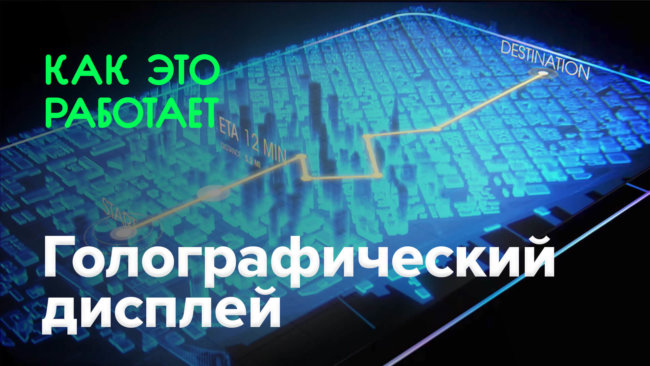
The first hologram was obtained by the Hungarian physicist Denison Gabor in 1947 in the course of the experiments to increase the resolution of electron microscopes. He coined the word “hologram”, wanting to emphasize the complete recording of the optical properties of the object. Dénes a little ahead of his time: his holograms had lower quality due to the use of gas discharge lamps. After the invention in 1960, ruby-red and helium-neon lasers, holography began to develop rapidly. In 1968 Soviet scientist Yuri N. Denisyuk developed a scheme of recording holograms on a transparent photographic plates and obtained high quality holograms. And 11 years later, Lloyd Cross created a multiplex hologram, consisting of several dozen camera angles, each of which can be seen only at one angle. How does the modern holographic display — this is in the news today!

The main material for recording holograms are special plates on the basis of traditional bromide silver, which allows to reach a resolution more than 5000 lines per millimeter. Also used photographic plates based on ukrainophones gelatin having a higher resolution. When used to 90% of the incident light is converted into an image that allows you to record very bright holograms. Actively developed and environment on the basis of holographic photopolymer materials. This multicomponent mixture of organic substances is applied as a thin film on a glass or film substrate.

As for holographic displays, there are several promising developments that deserve attention. RED Digital Cinema is working on a holographic display that is a LCD panel with a special light-guiding plate arranged under it. It uses diffraction to project different images at different angles, which leads to the illusion of “three-dimensional image”. Hydrogen smartphone with a holographic display should go out in the first half of 2018.
Already exist on the market displays the brand HoloVisio from the Hungarian company Holografika. The essence of technology consists in projecting the images of two dozen narrowly focused projector, thereby the image is decomposed in space into display. The complexity of this technology affects the price: the cost of a 72-inch screen with a resolution of 1280 by 768 pixels is about 500 thousand dollars.

And the Union of Japanese scientists for a long time working to create laser projection technology of Aerial 3D. They abandoned the traditional flat screen, drawing objects in three-dimensional space using laser beams. Aerial 3D uses an effect of excitation of atoms of oxygen and nitrogen by focused laser beams. At the moment the system is able to project objects, consisting of 50 000 points with a frequency of up to 15 frames per second.

Deserves attention and development of Microsoft, called Vermeer, which is a holographic display without actual display and a video camera that puts the system in touch. The display uses projection technology between the two parabolic mirrors. The laser beam draws the image with a frequency of 2880 times a second, consistently passing for 192 points. As a result, the viewer sees in the space of the picture that are updated 15 times per second and are available for contact.
It is possible that in the near future, holographic screens become more affordable and will get extensive use.
How does it work? | Holographic display
Hi-News.ru